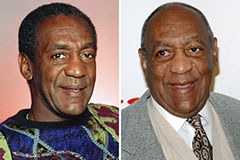Tattoo stores have actually advanced from being particular niche facilities to vivid area centers that celebrate originality, society, and art. They function as spaces where individual expression fulfills knowledgeable workmanship, and the tattooing process transforms right into a special experience for both the customer and the musician. This report looks into the diverse world of tattoo shops, discovering their history, the artistry entailed, the numerous styles, and their role in modern society.
A Brief Background of Tattooing
The method of tattooing go back thousands of years, with proof discovered in ancient human beings such as the Egyptians, Greeks, and Polynesians. Tattoos were usually utilized to signify standing, mark initiation rites, or offer as safety symbols. In the 20th century, tattooing started to move from a practice linked with sailors and outlaws to a kind of traditional art. The establishment of tattoo stores in metropolitan locations promoted this shift, allowing musicians to showcase their job and clients to discover their identities through body art.
The Art of Tattooing
At the heart of every tattoo store is the artist, whose ability and creativity take a breath life into the layouts. Tattoo artists undertake comprehensive training to understand the methods entailed in tattooing, including recognizing skin composition, health practices, and the usage of various devices and inks. Many musicians develop their special styles, ranging from typical and neo-traditional to realistic look, watercolor, and abstract art. This diversity permits customers to select a musician whose style resonates with their vision.
Tattoo musicians frequently function closely with clients to produce custom styles that mirror personal tales, beliefs, or looks. This joint process is indispensable to the tattooing experience, as it fosters a connection in between the artist and the client. Additionally, lots of tattoo stores provide examinations to aid clients navigate their alternatives and guarantee they are comfortable with their options.
The Tattooing Refine
The tattooing procedure generally starts with an appointment, where the artist talks about the customer's concepts and preferences. As soon as a design is settled, the musician prepares the work area, making sure that all tools is sterile and hygienic. The tattoo itself entails making use of a device that pierces the skin with needles to infuse ink right into the dermis layer. Relying on the dimension and intricacy of the design, the process can take anywhere from a few minutes to a number of hours.
Discomfort resistance differs amongst people, and musicians often employ methods to reduce pain, such as utilizing numbing creams or taking breaks during longer sessions. After the tattoo is finished, the musician gives aftercare guidelines to ensure proper recovery and upkeep, which is crucial for preserving the tattoo's integrity.
Tattoo Styles and Trends
Over the years, tattoo styles have diversified significantly, with new patterns emerging frequently. Some prominent styles include:
- Traditional: Characterized by bold lines and vibrant shades, conventional tattoos typically feature iconic imagery such as roses, heads, and maritime styles.
- Realism: This style intends to reproduce realistic pictures, typically depicting portraits, animals, or landscapes with unbelievable information.
- Watercolor: Influenced by the fluidity of watercolor paintings, this design utilizes soft, blended shades and does not have the standard black describes.
- Geometric: Utilizing forms and patterns, geometric tattoos frequently emphasize proportion and accuracy, producing visually striking layouts.
- Minimal: Simple and clean, minimal tattoos concentrate on basic forms and lines, attracting those who favor nuance.
The Role of Tattoo Shops in Area
Tattoo shops are more than simply puts to obtain tattooed; they typically act as neighborhood spaces where individuals from diverse histories gather. Several shops host occasions, art programs, and charity fundraisers, cultivating a sense of belonging amongst artists and customers alike. This communal facet is particularly vital in an age where individuality and self-expression are commemorated.
Additionally, tattoo shops have actually become systems for discussions around body positivity, psychological health, and social problems. Many musicians utilize their work to support for change, obstacle stereotypes, and promote approval of all type of body and identifications. This change reflects a more comprehensive cultural motion in the direction of inclusivity and understanding.
Final thought
Finally, tattoo shops represent an one-of-a-kind crossway of art, society, and community. They have actually transformed from underground facilities to respected centers of imagination and expression. As the tattooing landscape remains to evolve, these shops continue to be essential spaces for individual narration and imaginative exploration, celebrating the varied identifications of those that choose to decorate their bodies with ink. Whether it's a full sleeve or a little icon, each tattoo informs a story, making tattoo stores essential to the fabric of modern culture.
At the heart of every tattoo store is the musician, whose skill and creativity breathe life here right into the layouts. Tattoo musicians undertake extensive training to grasp the methods entailed in tattooing, consisting of understanding skin anatomy, hygiene methods, and the use of different devices and inks. Tattoo musicians usually function closely with clients to create customized styles that show individual stories, beliefs, or looks. Tattoo stores are extra than simply positions to obtain tattooed; they usually offer as area rooms where individuals from varied histories collect. In verdict, tattoo stores represent a special crossway of culture, art, and area.
 Danny Tamberelli Then & Now!
Danny Tamberelli Then & Now! Jennifer Grey Then & Now!
Jennifer Grey Then & Now! Josh Saviano Then & Now!
Josh Saviano Then & Now! Freddie Prinze Jr. Then & Now!
Freddie Prinze Jr. Then & Now! Bill Cosby Then & Now!
Bill Cosby Then & Now!